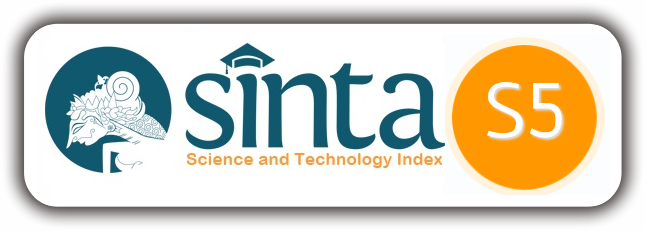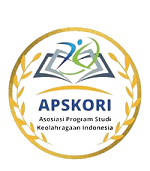The Relationship Between Optimism and Burnout In Rowing Athletes
Abstract
This study aims to investigate the relationship between optimism and burnout in rowing athletes. The subjects in this study were 20 rowing athletes selected through purposive sampling technique. The research employed a quantitative method using optimism scale and burnout scale as measurement tools. The Spearman’s Rank Correlation Coefficient analysis technique was used, which revealed a correlation coefficient (r) of -0.880 with a significance level of 0.000 (p < 0.01). This indicates a negative relationship between optimism and burnout in rowing athletes; the lower the optimism of the athletes, the higher the burnout experienced. This study provides insight into the relationship between optimism and burnout, particularly how optimism can influence burnout
Downloads
References
Berengüí, R., Ruiz, E. J., Montero, F. J. O., Marcos, R. d. V., & Gullón, J. M. L. (2013). Optimism and burnout in competitive sport. Psychology, 4(9A2): 13-18.
Chang, E. C. (2001). Optimism & pessimism: Implications for theory, research, and practice. Washington DC: American Psychological Association.
Chen, L. H., Kee, Y. H., & Tsai, Y.M. (2008). Relation of dispositional optimism with burnout among athletes. Perceptual and Motor Skills, 106: 693-698.
DeFreese, J. D., & Smith, A. L. (2014). Athlete social support, negative social interactions, and psychological health across a competitive sport season. Journal of Sport & Excercise Psychology, 36: 619-630.
DeFreese, J. D., Raedeke, T. D., & Smith, A. L. (2015). Athlete burnout: an individual and organizational phenomenon, hlm.1-35.
Gustafsson, H., & Skoog, T. (2011). The mediational role of perceived stress in the relation between optimism and burnout in competitive athletes. Anxiety, Stress & Coping, 1-17.
Karamil, M., Aghajari, M., Kazemi, S., & Beldaji, A. A. (2015). The relationship between burnout and performance of physical aducation teachers in kermanshah. International Interdisiciplinary Journal of Scholarly Research, 1(3): 10-12.
Lightman, D. (2004). Power optimism: Enjoy the life you have create the success you want. Abington: LLC.
Lipowski, M. (2012). Level of optimism and health behavior in athletes. Med Sci Monit, 18(1): 39-43.
MacDonald, L. (2018). Be your best self: You can be an optimist. New York: The Rosen Publishing Group.
Mishra, U. S., Patnaik, S., & Mishra, B. B. (2016). Role of optimism on employee performance and job satisfaction. Indian Journal of Management, 9(6): 35-46.
Nurtjahjanti, H., & Ratnaningsih, I. Z. (2011). Hubungan kepribadian hardiness dengan optimisme pada calon tenaga kerja indonesia (CTKI) wanita di BLKLN Disnakertrans Jawa Tengah. Jurnal Psikologi Undip, 10(2): 126-132.
Periantalo, J. (2016). Penelitian kuantitatif untuk psikologi. Yogyakarta: Pustaka Pelajar.
Raedeke, T. D. (1997). Is athlete burnout more than just stress? a sport commitment perspective. Journal of Sport & Exercise Psychology, 19: 396-417.
Raedeke, T. D., & Smith, A. L. (2001). Development and preliminary validation of an athlete burnout measure. Journal of Sport & Exercise Psychology, 23: 281-306.
Romadhoni, L. C., Asnomy, T., & Suryatni, M. (2015). Pengaruh beban kerja, Lingkungan kerja, dan dukungan sosial terhadap burnout pustakawan di kota Mataram. Khizanah Al-Hikmah, 3(2): 125-145.
Seligman, M. E. P. (2006). Learned optimism: How to change your mind and your life. New York: Vintage Books.
Vealey, R. S., & Chase, M. A. (2016). Best practice for youth sport. United States: Human Kinetics.
Weinberg, R. S., & Gould, D. (2011). Foundations of sport and exercise psychology. USA: Human Kinetics.
Copyright (c) 2024 Mitha Evalista, Irfan Yunus

This work is licensed under a Creative Commons Attribution-ShareAlike 4.0 International License.
Authors who publish with this journal agree to the following terms:
- Copyright on any article is retained by the author(s).
- The author grants the journal, the right of first publication with the work simultaneously licensed under a Creative Commons Attribution License that allows others to share the work with an acknowledgment of the work’s authorship and initial publication in this journal.
- Authors are able to enter into separate, additional contractual arrangements for the non-exclusive distribution of the journal’s published version of the work (e.g., post it to an institutional repository or publish it in a book), with an acknowledgment of its initial publication in this journal.
- Authors are permitted and encouraged to post their work online (e.g., in institutional repositories or on their website) prior to and during the submission process, as it can lead to productive exchanges, as well as earlier and greater citation of published work.
- The article and any associated published material is distributed under the Creative Commons Attribution-ShareAlike 4.0 International License








1.png)







